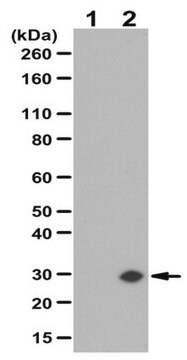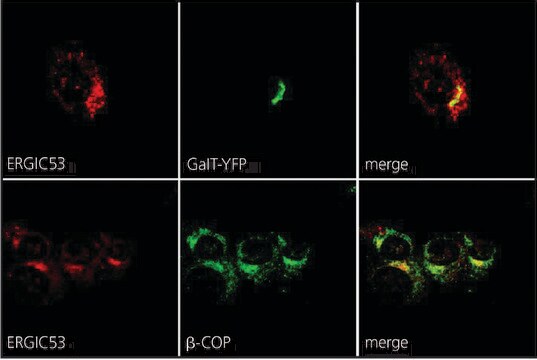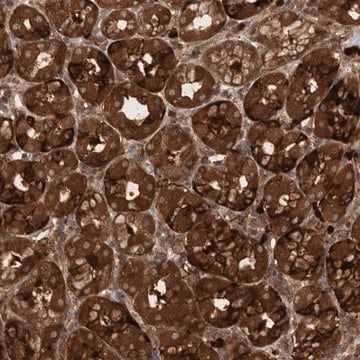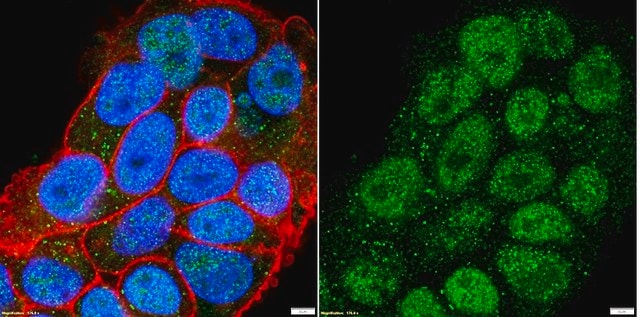G6916
Anti-GADD153 antibody produced in rabbit
affinity isolated antibody, buffered aqueous solution
Synonim(y):
Anti-CHOP-10
About This Item
Polecane produkty
pochodzenie biologiczne
rabbit
białko sprzężone
unconjugated
forma przeciwciała
affinity isolated antibody
rodzaj przeciwciała
primary antibodies
klon
polyclonal
Postać
buffered aqueous solution
masa cząsteczkowa
antigen 29 kDa
reaktywność gatunkowa
human
metody
immunocytochemistry: 5-10 μg/mL using Hela human cell
microarray: suitable
western blot (chemiluminescent): 1:200-1:400 using whole cell extract of HEK-293 over-expressing GADD 153.
numer dostępu UniProt
Warunki transportu
dry ice
temp. przechowywania
−20°C
docelowa modyfikacja potranslacyjna
unmodified
informacje o genach
human ... DDIT3(1649)
rat ... Ddit3(29467)
Opis ogólny
Immunogen
Zastosowanie
- nuclear and cytoplasmic fractions extracted from rat insulinoma (INS) cells to study CHOP Expression in response to ER stress
- whole cell lysates prepared from ER stress induced rat pancreatic tissues
- whole cell lysates prepared from ER stress induced pancreatic insulin-producing cells
It is suitable for immunocytochemistry at a working concentration of 5-10μg/mL using Hela human cell and microarray. It is also suitable for western blotting at a working dilution of 1:200-1:400 using whole cell extract of HEK-293 over-expressing GADD 153.
Działania biochem./fizjol.
Postać fizyczna
Oświadczenie o zrzeczeniu się odpowiedzialności
Nie możesz znaleźć właściwego produktu?
Wypróbuj nasz Narzędzie selektora produktów.
Certyfikaty analizy (CoA)
Poszukaj Certyfikaty analizy (CoA), wpisując numer partii/serii produktów. Numery serii i partii można znaleźć na etykiecie produktu po słowach „seria” lub „partia”.
Masz już ten produkt?
Dokumenty związane z niedawno zakupionymi produktami zostały zamieszczone w Bibliotece dokumentów.
Nasz zespół naukowców ma doświadczenie we wszystkich obszarach badań, w tym w naukach przyrodniczych, materiałoznawstwie, syntezie chemicznej, chromatografii, analityce i wielu innych dziedzinach.
Skontaktuj się z zespołem ds. pomocy technicznej






